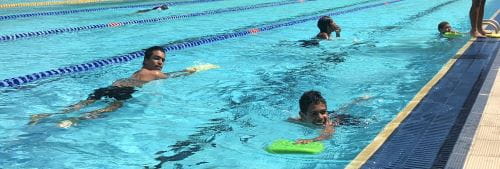Swim and Survive Fund makes swimming possible for Clontarf students
83 boys & girls from the Clontarf Aboriginal College in Waterford have taken part in a week of vital Swim and Survive swimming and water safety lessons thanks to the national Royal Life Saving Swim and Survive fund with the support of the Federal Government.
The Swim and Survive Fund provides swimming and water safety courses for children experiencing social or economic disadvantage. These are often children who have had limited or no exposure to the water and vital water safety education.
The 50 Clontarf boys enjoyed their lessons at Aqualife Centre in Victoria Park, while the 33 girls attended Riverton Leisureplex, learning skills to stay safe in the water as we head towards the summer months.
Research has found that the drowning rate amongst Australia Aboriginals is three times higher than other Australian children aged 0-14 years, and is ranked the second most common cause of death. Data from 1 July 2007 to 30 June 2017 shows that there have been 111 fatal and non-fatal drowning incidents recorded in WA involving Aboriginal Australians, making up 5.1% of total drowning incidents.
Last week’s program was designed to provide culturally appropriate swimming lessons, in partnership with our Endorsed Swim Schools at Riverton Leisureplex and Aqualife Centre, who deliver the Swim and Survive Program each term.
Royal Life Saving WA is building a strong partnership with the Clontarf Aboriginal College, with several programs run with the College over recent months in metro and regional WA, enabling us break down the barriers to participation for these Aboriginal youths to learn vital Swim and Survive skills.
Our hope is that the swimming and water safety skills learnt as part of the recent lessons will ensure these young people are able to more safely participate in aquatic activities this summer, especially with many of them heading to their home towns in regional WA once Term Four is finished.
Most regional towns have access to water holes, creeks and dams, where young Indigenous children often spend their time swimming. Although they may seem confident in the water, their knowledge of water safety is often quite limited, and in uncontrolled inland waterway locations there are dangers that could be life threatening.
Armed with vital Swim and Survive skills these young people are not only in a better position to keep themselves safe, but also to assist others who may get in trouble while enjoying water activities this summer.
If you’d like to support the Swim and Survive fund and help to provide similar opportunities for at-risk children please click the link below.

You can find out more about Royal Life Saving WA’s work with at-risk indigenous communities here.
